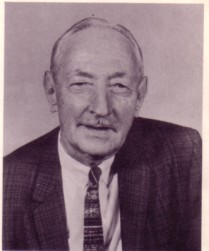Latest Gear Live Videos
Monday September 27, 2010 7:33 pm
Leslie Turner, Roy Crane, Wash Tubbs and Captain Easy
 I think it’s hard to take over a comic book or comic strip from a creator whose work is so ingrained in the original. Like Fantastic Four after Jack Kirby or Amazing Spider-Man post-Ditko, or American Flagg! after Howard Chaykin. It can be done, of course, and it’s done all the time since, with few exceptions (Calvin And Hobbes and Peanuts to name just two), keeping the property alive is advantageous to the rightsholder.
I think it’s hard to take over a comic book or comic strip from a creator whose work is so ingrained in the original. Like Fantastic Four after Jack Kirby or Amazing Spider-Man post-Ditko, or American Flagg! after Howard Chaykin. It can be done, of course, and it’s done all the time since, with few exceptions (Calvin And Hobbes and Peanuts to name just two), keeping the property alive is advantageous to the rightsholder.
Leslie Turner was one of those takeover guys. With Roy Crane’s blessing to his former assistant, Turner took over Captain Easy (formerly known as Wash Tubbs) when Crane left to create Buz Sawyer in 1943. Turner did a pretty good imitation Crane, and even stuck with the Craftint technique that Crane pioneered on the good Captain.
 Continuing my series on cartooning and cartoonists, Leslie Turner wrote about himself and his work back in 1964. This is pulled from an oversized saddle-stitched magazine from Allied Publications with the creatively-challenged title These Top Cartoonists Tell How They Create America’s Favorite Comics. It featured an introduction by Beetle Bailey’s Mort Walker and was compiled by Allen Willette.
Continuing my series on cartooning and cartoonists, Leslie Turner wrote about himself and his work back in 1964. This is pulled from an oversized saddle-stitched magazine from Allied Publications with the creatively-challenged title These Top Cartoonists Tell How They Create America’s Favorite Comics. It featured an introduction by Beetle Bailey’s Mort Walker and was compiled by Allen Willette.
Here’s Turner on Turner and Captain Easy:
“I am a native Texan with almost four years at Southern Methodist University. While there I was the editor of the year book, Rotunda. Then I was a free-lance artist in Dallas. While there I spent parts of three summers hoboing across the country on ‘blinds’ of passenger trains, or on top of baggage cars; traveling at night and sight-seeing in the daytime. The only cash I had was for dire necessities.
“I married Bethel Burson, a Texan, in 1923 and headed for New York. I did work for Judge and trade magazines and, later, for the Saturday Evening Post, Redbook and other national magazines. Then there were three years of raising sheep in Colorado, while doing some illustrations for Scribner’s and St. Nicholas. Then back to New York in 1933 to free-lance illustrations. Four years later I went to Cleveland to work with Roy Crane, an old friend from my Texas days, on his comic strip, Wash Tubbs.
“When Crane left in 1943 to start Buz Sawyer, I inherited the strip, now called Captain Easy. This chore has left me little time for anything eventful.
“Quite a few of my continuities require some research before I start to work on them. One such was the school drop-out theme I used. Another was on the alcoholic story I did some years back. I interviewed a number of Alcoholics Anonymous members and read books and treatises on the subject from the research done at Yale. When I did a story on missile and rocket subjects, I studied technical magazines devoted to that field, and I got available information from Public Relations at the Cape.
“Since many of my stories are laid in specific cities or regions, I take a great many pictures on trips through the country. I use them to work from in drawing background. I also have a sizable library on travel.
“I write a rough outline of a story first, and work out the details and incidents as I draw the strips. I average about two per day in the actual drawing of strips. Writing takes me about the same length of time, since I re-write several times to cut down on the wordage. It often takes time, too, to put over a certain incident (or get out of a jam I’ve written myself into).”
Of course, I have some thoughts and some links.
You don’t find many women named Bethel anymore.
In Ron Goulart’s The Adventurous Decade (Arlington House, 1975), the author said of Turner’s work on Captain Easy, that he “most often appears as a footnote to Crane in histories of the comics,” but that Turner was “really a very effective artist in his own right. By 1946, he had developed a strong style built on some of the Roy Crane foundation blocks, yet individual.”
I’m not familiar enough with Turner’s run on Captain Easy, but it seems that strips about alcoholism and school dropouts are better left in the hands of Gil Thorp and Mary Worth. Unless they’re alcoholic spies or GED smugglers, of course. But Turner was especially proud of the booze sequence and in The Adventurous Decade, Goulart says Turner was concerned about NEA’s reaction to the change of pace storyline and “sat on the drawings until it was too late to do anything else” before sending the strips to the syndicate. Bravo for Turner.
Turner and Crane were old Texas pals; they used to hobo together, traveling cross-country by train. Turner had been assisting on Wash Tubbs/Captain Easy since 1937 by the time he took it over in 1943, so he was certainly experienced and familiar with the strip. Between 1969 and 1970, Turner retired and turned the writing over to Jim Lawrence and the art over to his own then-assistant Bill Crooks. Previous artists pitching in on Captain Easy include Mel Graff and Walt Scott.
I like that Turner refers to his work as a “chore” and seems to lament that because of the grind of producing a daily strip, he can no longer do things like hobo around the country. I also like using “hobo” as a verb. “Riding the blinds” on a passenger train is hobo slang referring to riding on the train without paying. It has, so they say, its origins in riding in the open space between two train cars.
Comic Strip Fan has some original Captain Easy art on display; a daily by Turner and some later ones by Crooks and Lawrence.
The Chicago Tribune carried Turner’s obituary and mentioned that at one time Captain Easy was in 600 newspapers.
The Syracuse University Library in Syracuse, NY has a collection of 608 Captain Easy daily and Sunday strips by Turner from 1966-1967. If you can get over there, they’ll let you read ‘em.
For those interested in the origins of Captain Easy, you can’t do better than Fantagraphics Books which is reprinting Roy Crane’s classic strip, starting at the beginning.
I couldn’t find an online interview with Turner, so if anybody finds one, please send me the link and I’ll update.
[Artwork: photo of Leslie Turner (top); illustration of Captain Easy by Turner (bottom)]
Advertisement
Advertisement
Advertisement
© Gear Live Media, LLC. 2007 – User-posted content, unless source is quoted, is licensed under a Creative Commons Public Domain License. Gear Live graphics, logos, designs, page headers, button icons, videos, articles, blogs, forums, scripts and other service names are the trademarks of Gear Live Inc.












Comments: